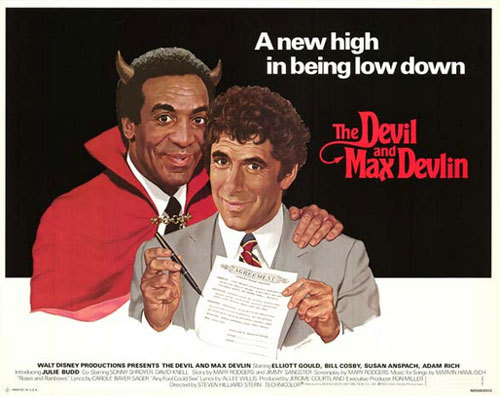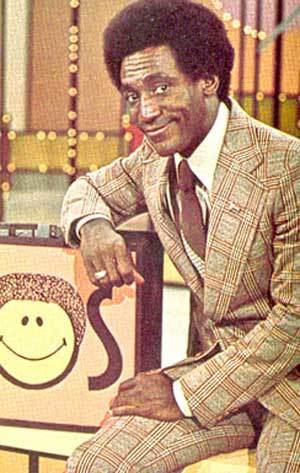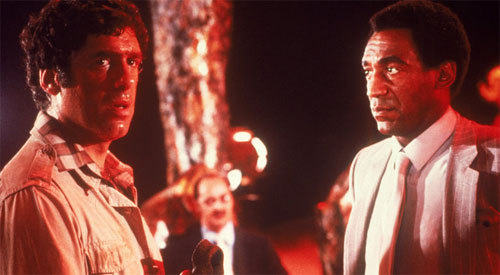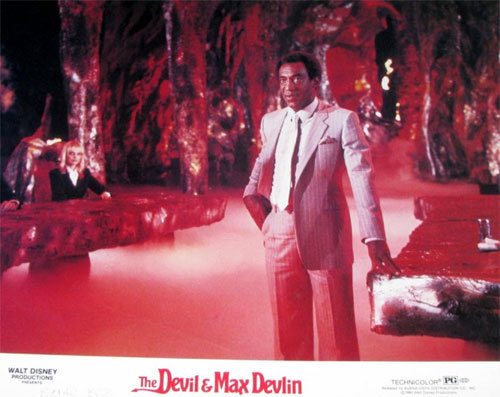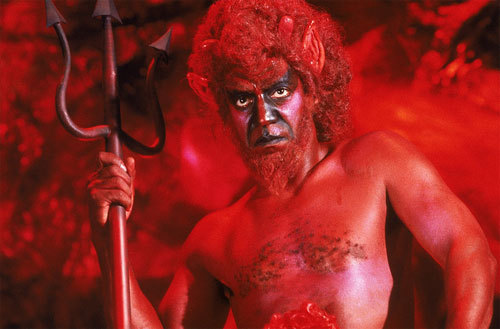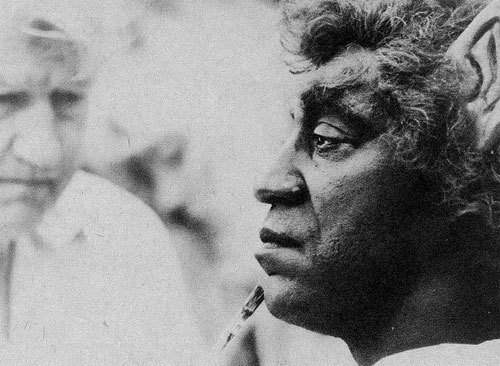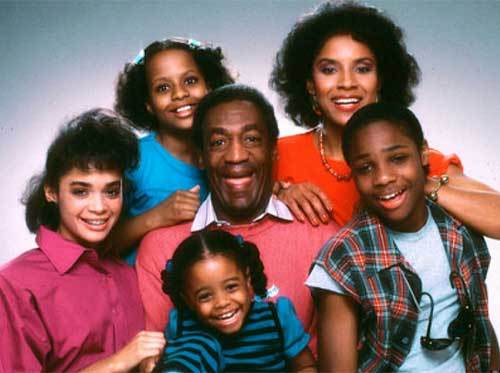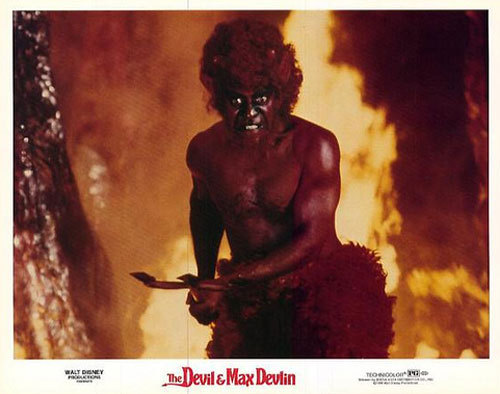Like a lot of you folks out there, I don't exactly know how to feel about Bill Cosby right now. I mean, the man is a comedy legend. As a kid, I listened constantly to Cosby's comedy albums and memorized many of his stand-up routines. But as someone who's been writing about the entertainment industry for over 3 decades now, I have long heard the whispers about Bill's darker side. Which is why when stories began to bubble up about all the women that Cosby had allegedly drugged and then taken advantage of ... Well, I can't exactly say that I was surprised.
So when a longtime friend & fellow Cosby fan called me earlier today and asked if I thought that the press was piling on, needlessly demonizing this 77 year-old, I have to admit that I kind of deflected his question.
"Hey, Disney already demonized Bill Cosby," I said. "Remember The Devil and Max Devlin."
This 1981 Walt Disney Productions release may not the worst movie that Bill ever made (After all, Cosby's filmography includes such gems as 1987's Leonard Part 6 and 1990's Ghost Dad). But judging by the single mention that The Devil and Max Devlin gets in Cosby: His Life and Times, (i.e., that new Bill-approved bio which Simon & Schuster published back on September 16th of this year) 'way back on Page 475 in the "Cosbyography" section of this book ... Devlin clearly isn't a project that Cosby was particularly proud of.
Which is understandable. Given that -- back in the early 1980s -- out of the eight major studios that were still making motion pictures in Hollywood at that time, Disney was eighth out of eight. At a time when people were flocking to see 1980's The Empire Strikes Back and 1981's Raiders of the Lost Ark, the Mouse was making Star Wars wannabe films like 1979's The Black Hole and stale sequels that no one ever wanted to see like 1980's Herbie Goes Bananas.
More to the point, Bill knew what people in the industry said about those performers who found themselves working for Walt Disney Productions in the late 1970s / early 1980s.That " ... Disney either gets you on the way up or the way down." And that if you had once been a top-billed performer who now found themselves working for the Mouse Factory ... Well, you then knew that you were having some pretty serious career problems.
And the late 1970s hadn't exactly been kind to Bill Cosby. His most recent attempt at a television series -- 1976's Cos -- only aired seven episodes before ABC cancelled it. And the last motion picture that Bill appeared in -- the 1978 ensemble comedy, Neil Simon's California Suite -- had seriously under-performed at the box office. Mind you, he still had his high lucrative stand-up gigs (not to mention the veritable fortune that Cosby made while working as a spokesman for Jell-O, Coca-Cola and Ford). But Bill was anxious to get back in the spotlight. Not just be that guy who was charming & funny in 30 second-long commercials. But prove that he was still a performer you could build a weekly television series around and/or star in a full length feature film.
Meanwhile over at Walt Disney Productions, Ron Miller -- Walt Disney's son-in-law and the then-newly appointed production chief and president of the Studio -- was determined to start making movies that would expand Disney's box office reach. Let would-be movie-goers know that the Mouse didn't just make kid's stuff anymore. That Walt Disney Productions was capable of creating motion pictures that would appeal to both adults and children.
And with this goal in mind, Ron optioned a short story that Mary Rodgers (i.e., the daughter of legendary composer Richard Rodgers. More importantly, the talented author who had scripted Disney's last hit film, 1976's Freaky Friday) had written about shady slumlord Max Devlin. Who -- after he gets hit by a bus -- finds himself descending into Hell.
Once Max officially arrives in the underworld (which is supposed to mirror the corporate world of the 1980s), Devlin then meets up with the Devil's right hand man, Barney Satin. Who offers Max a Get-Out-of-Hell-Free card if -- within 60 days -- he can convince three other people to sell their souls to Satan in exchange for his own.
Which -- I know -- doesn't sound like typical Disney fare. But that was the one of the main reasons that Miller was initially intrigued by this project. If the Studio was going to produce this script as written, The Devil and Max Devlin would be the first Disney film ever to use profanity in a non-religious connotation. To be specific, Mary Rodgers' screenplay (which was based on her original short story) contained would-be swear words like "Hell," "damn" and an incomplete "son-of-a-bitch."
Which -- when you consider that Jennifer Lopez and Iggy Azalea will soon be shaking their impressive assets on Disney-owned ABC when they perform Booty live on the American Music Awards this coming Sunday night -- the fact that Mouse House executives would have ever considered it shocking that an actor would say "Hell," "damn" or "son-of-a-bitch" is a Disney film is kind of laughable. But -- again -- let's remember that this is the early 1980s that we're talking about here.
Anyway ... Ron knows that -- in order to make this comic remake of Faust palatable for middle Americans -- he's going to find just the right actor playing Satan's right hand man in this motion picture. Which is why Miller has Disney's casting agents reach out to Mr. Jell-O Pudding Pop himself.
And as it turns out, Cosby had previously been approached to appear in various Disney films and TV shows. But Bill had always turned Mickey down because -- as he explained in a March 1981 interview with the Montreal Gazette -- " ... I was reluctant to work with the Disney studio for a long time because I heard that they were ultra-conservative people and wouldn't give minorities a fair shake."
More to the point, after she read Rodger's screenplay, Cosby's wife Camille expressed some concerns about whether it would be wise for an African-American performer of Bill's stature to be seen playing a minion of Satan. As Cosby recounted that conversation with his spouse in a June 1980 interview with Bob Thomas ...
"Are you aware in many pictures (in art), the presentation of Satan and all things bad is colored black?," she asked.
"Yeah," he replied.
"Then do you think it's wise for you to play the devil?"
"Yes, because in all movies prior to this one, the devil has always been played by a white actor."
So Cosby agreed to play Barney, Satan's first assistant opposite Elliot Gould's sad sack slumlord, Max Devlin. Though one has to wonder if Bill had second thoughts once production officially got underway on this Steven Hilliard Stern film. Given that the working conditions -- especially when they shot all those scenes set in the underworld -- were genuinely hellish.
To make Soundstage 3 look just like Hell, Disney designers first built a series of towering plaster stalagmites and then surrounded those with 20 butane furnaces, various smoke-generating devices, and 18 tons of dry ice. Once all of that fire-making & smoke-generating equipment was turned on, while the set looked great through the camera lens, the temperature inside of Soundstage 3 rose well past the 100 degree mark. Which meant that Stern could keep his actors on set for a short amount of time before they'd all have to head outside to cool down.
This was especially true for Cosby. Given that -- when Bill was playing Barney in non-human form -- the make-up that Bob Schiffer created for this role was extremely elaborate. We're talking a heavy wig with ears and horns sewn inside. Not to mention the thick mauve color base coat and that water-soluble red make-up which Schiffer had specially ordered from Germany in order to tint Cosby's naturally dark skin.
Mind you, all of this extra time, effort and expense might have ultimately been worth it if The Devil and Max Devlin had actually been a hit. But when this allegedly adult-friendly film opened in theaters in March of 1981, both kids and their parents turned up their noses at this particular Walt Disney Productions release.
"(The Devil and Max Devlin) cost between $7.1 and $7.2 million to make,'' Ron Miller told the New York Times in an August 1981 interview. ''We lost a considerable amount of money. We were lucky to make six and a half in the film rentals with a write-off of $4 million.''
So the career boost that Cosby had been counting on wouldn't come from The Devil and Max Devlin. But -- rather -- the concert film that briefly ran in theaters two years later, 1983's Bill Cosby: Himself.
It's worth noting here that Bill Cosby: Himself actually earned less at the box office during its initial theatrical release than The Devil and Max Devlin did. But that's because 20th Century Fox had so little confidence in this concert film that -- when Bill Cosby: Himself was originally released to theaters in May of 1983 -- it had a very limited run and was only shown in a small number of houses.
It was only when Bill Cosby: Himself began airing regularly on HBO in late 1983 / early 1984 that this concert film began being seen by a mass audience. More importantly, it was this film that convinced veteran television producers Marcy Carsey and Tom Werner that they could build a winning sitcom around the comedy routines which Bill had spun out about family life in the Cosby household.
And as it turns out, The Devil and Max Devlin proved to be an important film in Walt Disney Company history. But not for the reasons that you might think.
You see, following the March 1981 release of this Steven Hilliard Stern film, so many middle Americans wrote letters to Walt Disney Productions about how scandalized they'd been by The Devil and Max Devlin, how they were sure that Walt himself would have never made a movie which included such needless swearing that ... Well, Ron Miller then began exploring the idea of setting up different distribution banners at Disney. Ones that could then be used to release films that were more mature in nature and had a darker tone than the ones that the Mouse Factory typically released. Which is where Touchstone Films (established in February of 1983) and Hollywood Pictures (established in February of 1989) came from.
And none of this would have happened if -- back in 1980 -- Ron Miller hadn't thought to have Disney's casting agents ask Bill Cosby if he wanted to go to Hell.

